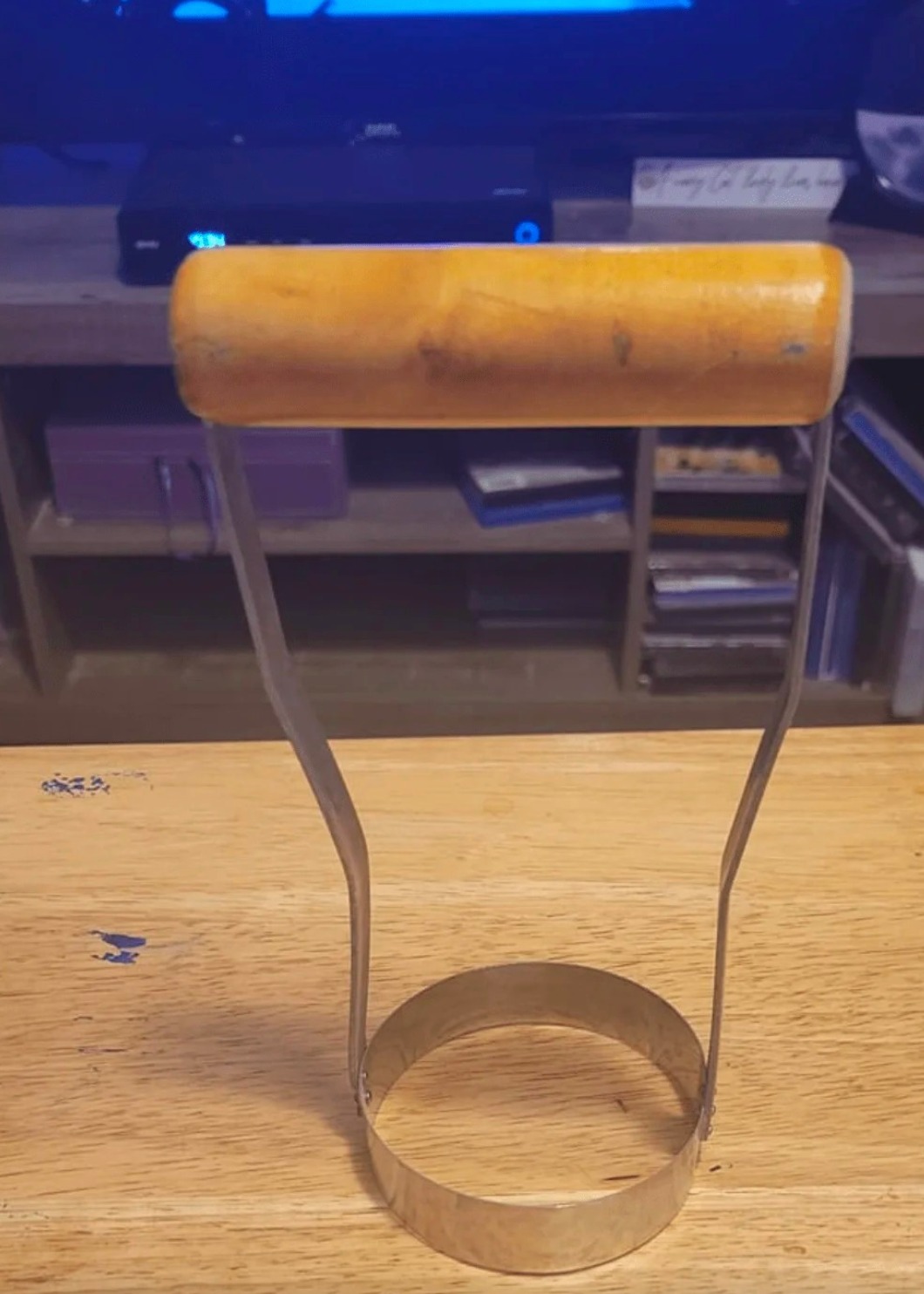When it comes to uncovering the mysteries of vintage kitchen tools, few items spark as much curiosity as the Kwik-Kut Deluxe Food Chopper. At first glance, it might look like an odd little gadget from another era—but for many homemakers in the early to mid-20th century, it was an indispensable part of daily life in the kitchen.

This hand-cranked chopper, invented in the United States in the early 1900s, quickly gained popularity thanks to its ability to chop and mince food with remarkable efficiency. It provided a practical solution for busy families looking to streamline their meal prep, long before food processors and electric choppers became the norm. The Kwik-Kut was especially valued for its simplicity and durability, and it became a staple in American households, passed down through generations as both a practical tool and a nostalgic keepsake.
Designed with a metal cylindrical body and a sharp rotating blade inside, the chopper worked by placing the desired food inside the container and turning a side handle that powered the internal blade. As the crank rotated, it chopped the contents into small, manageable pieces—whether it was vegetables for soup, fruits for a pie filling, or even nuts for a dessert topping.
The hand-crank mechanism gave users full control over the consistency of the chop, making it incredibly useful for cooks who liked to be hands-on with their food preparation. Its original design was built entirely from metal, emphasizing sturdiness and longevity, but like many tools, the Kwik-Kut didn’t remain static over time. In the 1930s, a few key design updates were introduced to make the tool even more user-friendly.
A larger base was added to improve stability during use, and the handle was lengthened to provide greater leverage, making it easier to operate for people of all ages. These changes made it more accessible, especially for homemakers who spent hours preparing meals from scratch every day. By the 1950s, the device underwent further modernization, this time incorporating a plastic handle for improved grip and comfort, along with a sleeker, more modern silhouette that fit better into post-war kitchens with their growing emphasis on style and compact efficiency. Despite these improvements, the Kwik-Kut has gradually disappeared from everyday use. As kitchen technology advanced and electric gadgets took over, the need for manual choppers dwindled. Today, you’d be hard-pressed to find a new Kwik-Kut advertised in stores or even mentioned in modern kitchen product lineups. But while they may be largely forgotten by mainstream markets, many families still hold onto these charming tools. In fact, some people continue to use their Kwik-Kut choppers on a regular basis, swearing by the level of control and precision it offers. Others may keep it tucked away in a drawer or displayed on a shelf, not for its functionality but for the sentimental value it carries—often handed down from mothers or grandmothers who once relied on it daily. For many, the Kwik-Kut represents more than just a kitchen utensil; it’s a symbol of another time, a reminder of the way things used to be when food was prepped by hand, when gadgets didn’t rely on electricity, and when a well-used tool told the story of a hundred family meals. While it may no longer dominate kitchens like it once did, its legacy lives on in vintage shops, family collections, and the memories of those who still remember the rhythmic clink of the blade as it chopped its way through carrots, apples, and walnuts. For kitchen history buffs or anyone who appreciates the charm of antique tools, the Kwik-Kut Deluxe Food Chopper stands as a testament to both ingenuity and the timeless nature of simple, functional design.





